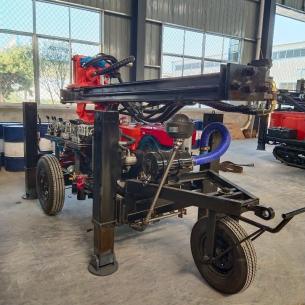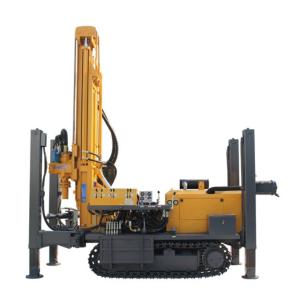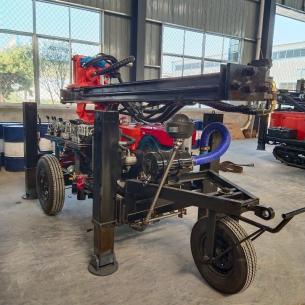Key Factors in Exploration Drill Rig Selection: Your Ultimate Buyer's Guide
In the field of drilling engineering, the selection of exploration drilling rigs directly affects the success and benefits of the project. Whether it is used for geological surveys, hydrological well drilling, or mineral exploration, it is crucial to choose a drilling equipment that matches performance and is stable and reliable. This article will deeply analyze the core factors that must be weighed when purchasing an exploration drilling rig to help you make wise decisions in a complex market environment.
1. Clarify the core needs: project goals are the cornerstone of model selection
Drilling depth and aperture
This is the most basic indicator of drilling rig performance. How deep does your project need to drill? What is the target aperture? Deep exploration must require a rig with stronger power and a more stable drill pipe system.
Target formation and lithology
When facing soft soil layers, gravel layers, hard bedrock or complex fractured zones, the required drilling rig capabilities and drilling processes (such as rotary drilling, impact, and core drilling) are completely different. Water well drilling rigs need to highlight adaptability when dealing with variable formations.
Geological exploration drilling rigs
Focus on core recovery rate and core quality, and have high requirements for equipment precision.
Hydrological water well drilling rigs
Emphasize drilling efficiency, large aperture capacity and well completion quality, and take into account supporting functions such as well washing and pipe lowering.
Engineering survey drilling rigs
Often require lightness and efficiency, and adapt to operations in cities or areas with inconvenient transportation.
2. Core performance parameters: Hard power determines construction capacity
Power system: Engine power is the core of the drilling rig power, which directly affects the drilling capacity and efficiency. High-power diesel engines provide strong torque and are suitable for deep-hole hard rock; electric or hybrid models are outstanding in environmental protection and quietness.
Feeding/lifting capacity: Strong feeding force and lifting force are the guarantee for efficient penetration of complex formations and handling of accidents in the hole, which is directly related to the construction efficiency of the drilling rig.
Torque and speed: High torque can cope with hard rock formations, and the wide range of adjustable speed can match different drilling tools and process requirements, which is a reflection of the flexibility of the drilling rig performance.
Drilling depth capability: The nominal maximum depth of the selected exploration drilling rig needs to leave a margin to cope with the situation where the actual formation may be more complex than expected.
3. Reliability and durability: guarantee of long-term value
Core component brands
Engines, hydraulic pumps, and motors from well-known brands,usually mean more reliable drilling rig performance and longer service life.
Structural design and manufacturing process
A sturdy chassis, optimized load-bearing structure, and high-quality welding and material processing processes are the basis for stable operation of drilling equipment under harsh working conditions.
Brand reputation and service network
Choosing a drilling rig brand with a good market reputation, a complete after-sales service network, and sufficient spare parts supply can minimize downtime losses.
Conclusion: A wise choice starts with deep insight
Choosing a suitable exploration rig or water well rig is a systematic project that requires careful consideration. It is far from a simple parameter comparison, but requires you to accurately match the rig performance and rig capacity with the unique needs of the project. Starting from clarifying the core goals (depth, hole diameter, formation), in-depth evaluation of the rig power, rig construction efficiency, technical configuration of drilling equipment (drill pipe system, control system, pumping capacity), to considering its long-term reliability, durability, maintenance cost and convenience of spare parts supply, every step is crucial.



